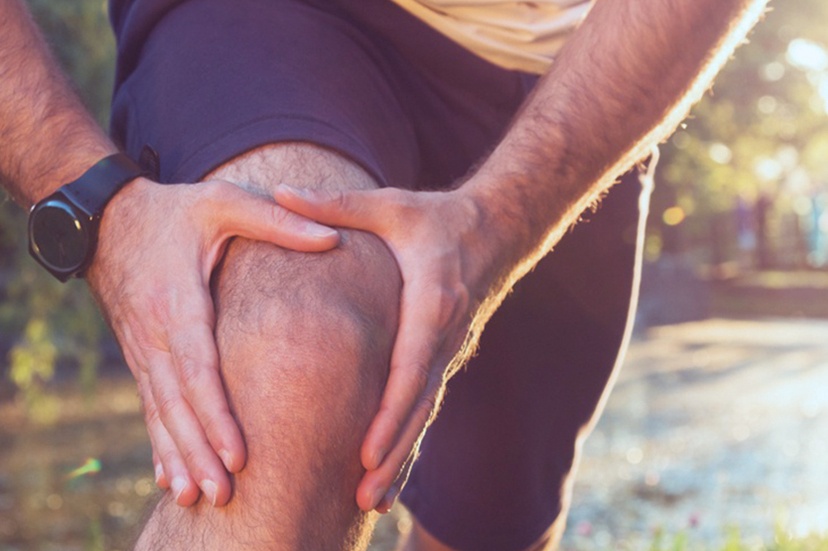 Joints are integral components of the musculoskeletal system, linking bones throughout the body. From synovial and cartilaginous joints to movable and fibrous joints, these articulations keep us from falling apart—quite literally. Just think about the importance of your knees, for example—they connect your thighs to the rest of your legs, enabling you to walk, jump and run.
Joints are integral components of the musculoskeletal system, linking bones throughout the body. From synovial and cartilaginous joints to movable and fibrous joints, these articulations keep us from falling apart—quite literally. Just think about the importance of your knees, for example—they connect your thighs to the rest of your legs, enabling you to walk, jump and run.
Consequently, joint problems can be extremely uncomfortable and frustrating to deal with when they're not performing at their best. The key is to pinpoint your exact symptoms; a medical professional can then consider when determining the cause and type of joint pain you are suffering from. Once the source is identified, you will be able to weigh your treatment options so you can effectively manage your condition.
Common Signs of Joint Issues
Warning signs indicating joint issues, besides the pain itself, include:
- Inflammation
- Numbness
- Stiffness, or poor range of motion
- Tenderness
- Weakness
These symptoms are usually associated with certain health issues/disorders, such as:
Possible Causes of Joint Pain
Diet
Certain foods trigger joint inflammation, including sugar, grains—such as pasta and rice—salt, dairy, and red meat. Consider nutritional counseling to learn more about the types of foods to avoid if you’re experiencing problems with your joints.
Injury
You may feel discomfort in your joints as a result of an injury. For example, a sprained anterior cruciate ligament (ACL) or meniscus could be the source of your knee pain; a torn rotator cuff may be the reason your shoulder is bothering you.
Oftentimes, you hear about adolescents and professional athletes affected by these types of injuries. A 2013 study published by the Journal for Athletic Training and shared by the U.S. National Library of Medicine examined the frequency at which both male and female high school athletes suffer ACL injuries. The results reveal this specific affliction accounted “for 50% or more of all knee injuries, making this ligament especially important in any discussion of knee injuries.” Female soccer players were the most affected, followed by football players.
There are plenty of other impairments that cause stress to your joints, however, and you don’t have to be an athlete to be at risk. For instance, you could break or fracture your hand in a car accident, causing pain in your thumbs, fingers and wrist. You could also fall and dislocate your sternoclavicular joint, which is an important articulation linking your shoulders to your arms.
Diabetes
People with diabetes sometimes experience joint inflammation as a result of their condition.
As stated in a 2001 article, published by online resource Clinical Diabetics: “Diabetes can cause changes in your musculoskeletal system, which is the term for your muscles, bones, joints, ligaments, and tendons. These changes can cause numerous conditions that may affect your fingers, hands, wrists, shoulders, neck, spine, or feet.”
Specifically, diabetics may develop carpal tunnel syndrome and trigger finger, which is “a catching or locking of the fingers.” They may also notice issues regarding their shoulder joints, and even their skin.
Arthritis
When many people hear the words “arthritis,” “joint pain” is usually their next thought—and for good reason. This disorder causes mild to severe stiffness and tenderness in the body’s joints.
According to statistics shared by the Centers for Disease Control and Prevention (CDC): “From 2013- 2015, an estimated 54.4 million U.S. adults (22.7%) annually had ever been told by a doctor that they had some form of arthritis, rheumatoid arthritis, gout, lupus, or fibromyalgia.” These numbers are expected to rise, with the CDC estimating that approximately “78 million (26%) US adults ages 18 years or older are projected to have doctor-diagnosed arthritis” by 2040.
Since everyone with arthritis has not necessarily been diagnosed, there are likely many more suffering from this condition. Rheumatoid arthritis, gout, lupus and fibromyalgia are among some of the most common types of arthritis, as previously noted. However, there are others to consider, according to the nonprofit Arthritis Foundation.
These include, but are not limited to:
- Bursitis
- Degenerative Disc Disease
- Osteoarthritis
- Osteoporosis
- Reactive Arthritis
- Spinal Stenosis
- Tendonitis
Sacroiliac Joint Inflammation
There is a sacroiliac (SI) joint on each side of the lower spine in your body. These articulations connect the sacrum bone with the pelvis, supporting and stabilizing the spine. SI joint inflammation could be a side effect of the medical condition sacroiliitis or SI joint dysfunction. This may result in lower back, hip, and leg pain, as well as other discomfort throughout the body.
While pregnant women are among those at risk, SI joint inflammation can affect anyone.
A 2014 study, published by the journal Medical Devices: Evidence and Research, and also shared by the U.S. National Library of Medicine, examined the effects of SI joint issues. Titled “Sacroiliac joint pain: burden of disease,” the study revealed that the exact number of people who suffer discomfort within their SI joints is unknown: “The prevalence of SIJ [SI joint] pain in the US is not known, but it can be estimated. SIJ pain, a subtype of lower back pain, could represent up to 15% of all patients seen in outpatient clinics with chronic lower back pain.”
Since there are about 234 million adults in the country and 19% to 29% of these have chronic lower back pain, the study contends that approximately 10 million experience problems with their SI joints.
Treatments to Consider
Physical Therapy
As discussed in one of our previous posts about what a physical therapist does, this treatment aims to decrease pain and inflammation in various joints, muscles, ligaments and tendons in the body. During each physical therapy session, patients are required to perform targeted exercises that may help increase muscle strength and improve the range of motion in their joints. Typically, patients are instructed to perform additional exercises or movements at home, in between appointments, as well.
Chiropractic Care
Similar to physical therapy, chiropractic care utilizes specific movements and rehabilitative techniques to increase strength and flexibility. This, in turn, could relieve joint and/or muscle pain, helping heal an injury or manage a chronic health condition.
Physiatry
Physiatry addresses discomfort and improves function within joints in the body by utilizing various therapies, including trigger point therapy, nerve blocks, viscosupplementation (for the knee) and prolotherapy. Oftentimes, patients visit a physiatrist after injuring themselves. Herniated disks, sprains, knee injuries, tennis elbow and rotator cuff injuries are just several examples. However, many patients with specific disorders also seek physiatry treatments. These include: myofascial pain often associated with tendonitis, frozen shoulder, and other conditions, as well as fibromyalgia and carpal tunnel syndrome.
Nutritional Counseling
Food may contribute to joint issues, too. Dietary changes may relieve some or all of the pain. If you are not sure which foods to avoid and which to incorporate into a new diet plan, consider nutritional counseling. Not only can a nutritionist provide valuable information regarding the foods you eat and your specific nutritional needs, but he or she can also act as a much-needed support system if you ever start to feel overwhelmed during the process of changing your nutrition plan.
3D Spinal Decompression Therapy
3D spinal decompression therapy is a treatment option focusing on lower back pain.
As Dr. Michael Reid, chiropractic and spinal decompression specialist at the Long Island, NY-based Northport Wellness Center, shares in one of our past articles: “Spinal decompression therapy is effective for both neck (cervical spine) and lower back (lumbar spine) conditions. In some cases, it can also be effective for conditions that affect the mid-back (thoracic spine).” Additionally, he explains, in many cases, “patients will see positive results after the first treatment.”
The Northport Wellness Center is dedicated to helping those who suffer from joint pain, whether due to an injury or chronic health condition. We have developed a spine and joint recovery program that can be customized to ensure every patient we treat achieves optimal wellness.













